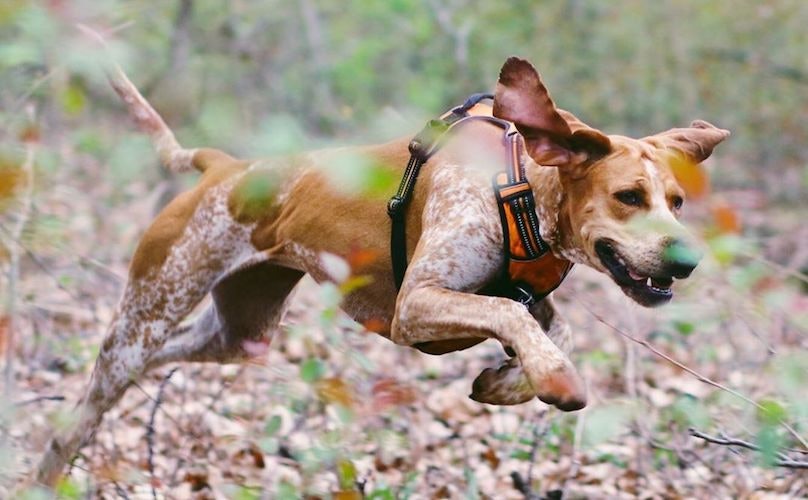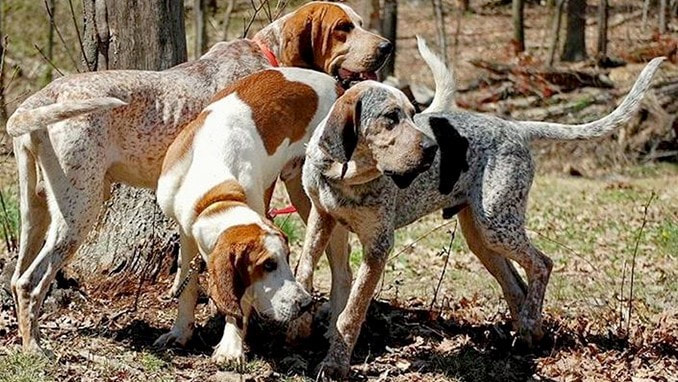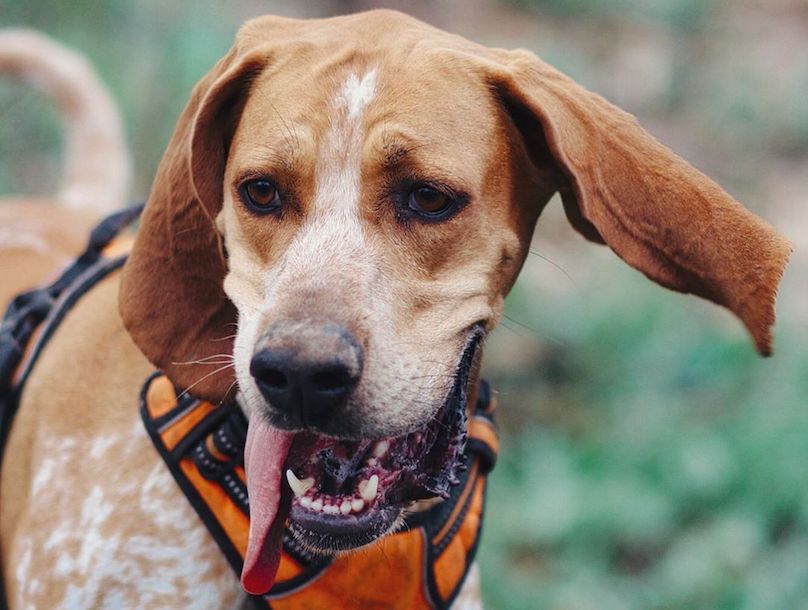The English Coonhound, also referred to as the American English Coonhound or the Redtick Coonhound, is a breed of coonhound that originated in and is typically bred in the Southern United States. It is descended from hunting hounds, especially Foxhounds brought to America by settlers during the 17th and 18th centuries. The breed’s first recognition came from the United Kennel Club in 1905 as the English Fox and Coonhound. Further recognition has been granted in recent years by the American Kennel Club, first in the Foundation Stock Service and 2011 as a fully recognized member of the hound group.

The breed is of medium height and proportionate weight, and their coats come predominantly in three types: redtick, bluetick, and a tricolour tick pattern. The English Coonhound has a high prey drive and, while it is typically used in ‘coon hunting’, it is also skilled in treeing. This breed is generally a healthy one, but it is recommended that prospective owners learn to recognize symptoms of bloat, as its large size and deep chest put them at risk of this condition.
History
The breed’s ancestry can be traced back to Foxhounds brought to the United States by European settlers during the 17th and 18th centuries. It shares a common ancestry with all other coonhounds, except for the Plott Hound. The breed developed from ‘Virginia Hounds’, which were developed over time from dogs imported to the United States by Robert Brooke, Thomas Walker and the first President of the United States, George Washington. The terrain here was much rougher than what they were used to, so the breed was specifically bred over time to better adapt to these new conditions. It was traditionally used to hunt raccoons by night and the American red fox by day.

Hunting
The breed has proven popular with coon hunters and has a powerful nose which enables it to track both small and large game, including raccoons, cougars and bears. One of the types of hunting that the breed is used for is treeing, where the dogs are used to force climbing animals up into trees, where they can be cornered and shot by hunters.
While known for their ability in this type of hunting, they can lose their ability to pace themselves and, on occasion, stand their ground when they believe that they have chased their prey up a tree, even if they haven’t. They can have a one-track mind while hunting and tune everything else out, including commands. Against cougars and bears, they can keep the larger game in position until the hunters arrive. They have become a favoured breed in coon hunting.
